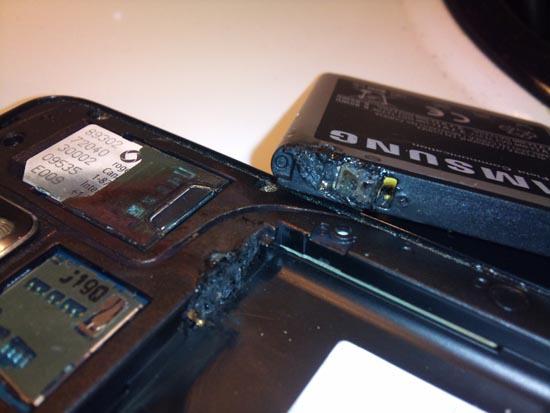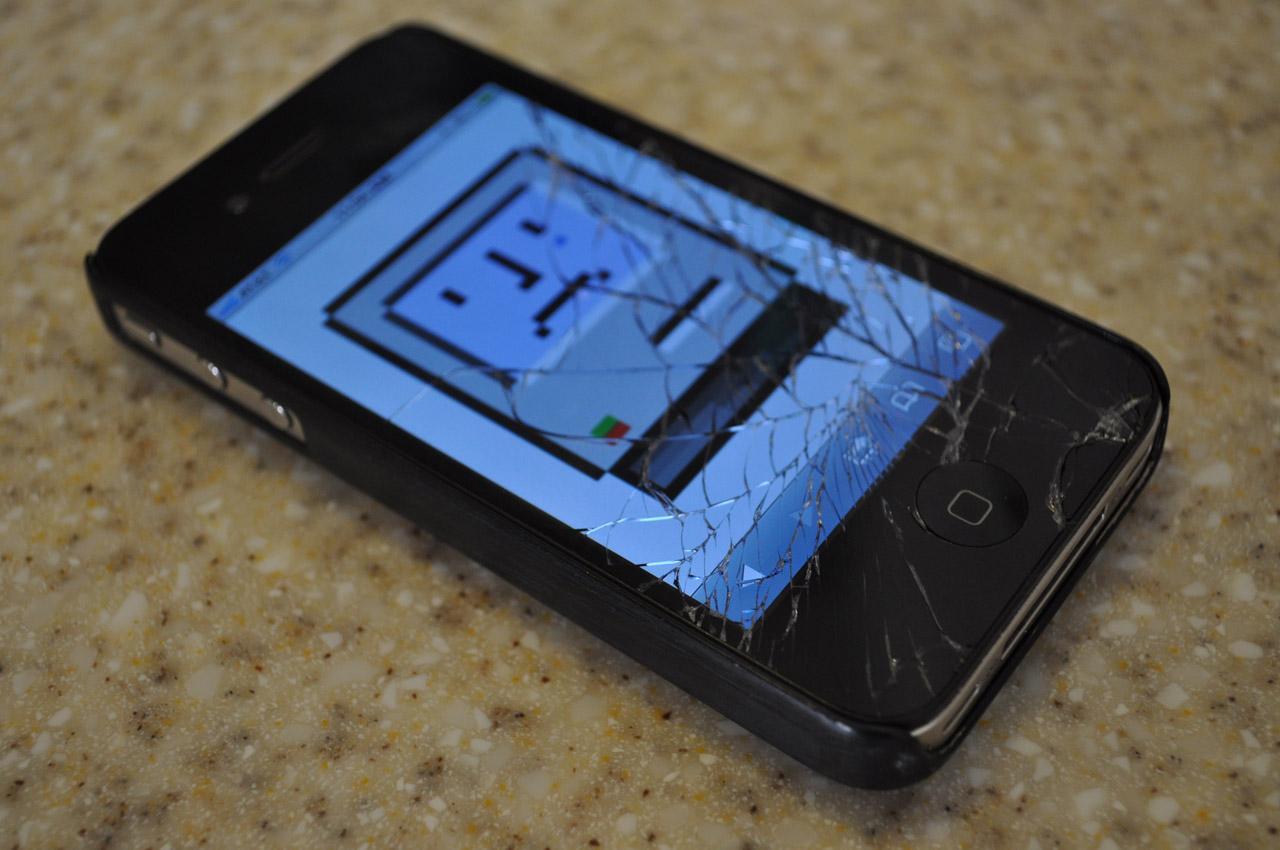
Generally, the only dangers people associate with cell phones are severe addictions to Angry Birds, text messaging, Facebook or Twitter and some related wrist or thumb pain. In truth, phone-related aches and pains can be pretty serious, like arthritis at the base of the thumb in young adults (sometimes even youths), better known as "text thumb." Even the fact that you are almost always looking down when using a cell phone or tablet has commonly led to unexpected neck, shoulder and back pain.
While these phone-related pains are not life-threatening, they are still fairly serious and could eventually lead to more serious problems in the future. Regardless, when you think about cell phones, the last word that would likely ever come to mind is dangerous or unsafe. Should it, though? Should we be more cautious of our pocket computers?
I'm sure if you asked xda-developers member Silly22's friend, he would give the nod of approval. The unnamed friend of Silly22 was minding his own business when he heard a noise and felt a burning sensation on his leg. When he pulled his Galaxy S II Skyrocket out of his pants pocket, he could smell something burning and smoke was expelled from the phone. The result was a charred SIM card and slot, and a melted battery, battery door and connector. Oh, lest we forget, a scarred consumer.
Silly22's friend, however, isn't the only person to experience spontaneous combustion of a phone. Just two days ago, reports of an iPhone "emitting a significant amount of dense smoke," accompanied by a lava-like "red glow" on an Australian regional airline last week. This was the second report of this nature to come out of Australia in November alone. In fact, if you take to the Web in search of related events numerous stories of battery-powered electronics exploding, hissing, smoking and unexpectedly melting can be found.
And the spontaneity of the battery is only half the story. Shattered glass from a dropped smartphone is an all too common occurrence. Remember the exploding DROID 2? Turns out, that was only a case of a dropped phone and the user failing to notice the screen had cracked after the drop. When he put the shattered phone to his ear to make a call, one of the shards sliced his ear, causing him to believe the device had exploded (to this day, I'm still curious as to how he ever truly believed that) in his ear. He needed four stitches afterward.

When people are reluctant to cough up a money for a new phone or a deductible towards insurance claim after damaging a device's display – whether they can't afford the deductible or don't even have insurance in the first place – they're forced to continue using a phone with shattered glass over the display. Common sense should explain the rest; sliding your finger over a display covered in shattered glass probably isn't the smartest or safest idea ever. It often leads to sliced fingers and ears. (If you must continue to use a shattered smartphone, at least consider placing a screen protector over the glass, if nothing else.)
Lastly, there is the radioactivity and constant barrage of radio waves to consider. Radioactivity in cell phones is rated in Specific Absorption Rate (SAR) which, according to CNET, is the "amount of radio frequency energy that is absorbed by the body when using the handset." To pass FCC certification in the United States, a phone's SAR level must be 1.6 (watts per kilogram) or below. This is assumed to be below the safe amount of radioactivity, but there has been some research to provide a link between long-term cell phone use and brain tumors, decreased sperm count, etc. Likewise, other research found no such link.
For the most part, I'm not terribly worried about SAR levels and radioactivity. I trust the FCC and OEMs are taking the necessary precautions to keep consumers safe. But it's worth noting that I personally have owned a few phones that topped the SAR charts out a few years ago, like the BlackBerry Curve 8330, Tour 9630, Bold 9000 and even the Motorola DROID X.
I knew about the levels, but I was never concerned. However, with the Curve 8330 at times, I recall having a burning sensation in my leg, always next to where the Curve was pocketed. It wasn't your typical burning sensation, though; it wasn't hot at all. But I could feel it from the front to back of my leg. I have also physically burned my hand on a cell phone before. I had left my Nexus One face-down on a truck dashboard to charge while moving a few things one day. I was only away for about 10 minutes, but the phone had been laying in direct sunlight. When I grabbed the phone, which had a metal backing, it physically burned my hand. After it had a chance to cool, I unlocked it and it read roughly 180 degrees Fahrenheit on one of the widgets on my home screen. I also had an original Palm Pre overheat while streaming Pandora, using Telenav navigation and charging at the same time. It was a recipe for disaster, I know.
While cell phones may not seem dangerous, there are some points of question. Recently, reports of hot and/or glowing, exploding phones have been on the rise. I'm forced to wonder whether this is a direct effect of manufacturers rushing a delicate manufacturing process. Instead of spending years on end manufacturing and perfecting a phone, they are now churned out like it's going out of style. Could this be the root of the problem with spontaneously combusting phones?
I'm not saying we should boycott smartphones or wear tin foil hats. But it's smart to stay cautious. If your phone gets hot and begins smoking while on charge or in your pocket, take it off charge and distance yourself from it. If you drop your phone and shatter the glass, replace the phone, the glass, or place a screen protector over it to keep the glass in place and your fingers intact.
Have you ever experienced some sort of freak accident with one of your phones? Has one of your phones ever started smoking, burned your hand or sliced a finger? Has it changed the way you look at cell phones? Sound off below!
Image via xda-developers